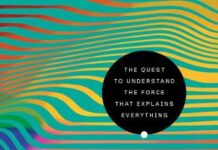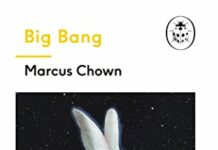
Ebook Info
- Published: 2006
- Number of pages: 216 pages
- Format: PDF
- File Size: 11.49 MB
- Authors: Marcus Chown
Description
The two towering achievements of modern physics are quantum theory and Einstein’s general theory of relativity. Together, they explain virtually everything about the world we live in. But, almost a century after their advent, most people haven't the slightest clue what either is about. Did you know that there’s so much empty space inside matter that the entire human race could be squeezed into the volume of a sugar cube? Or that you grow old more quickly on the top floor of a building than on the ground floor? And did you realize that 1% of the static on a TV tuned between stations is the relic of the Big Bang? These and many other remarkable facts about the world are direct consequences of quantum physics and relativity. Quantum theory has literally made the modern world possible. Not only has it given us lasers, computers, and nuclear reactors, but it has provided an explanation of why the sun shines and why the ground beneath our feet is solid. Despite this, however, quantum theory and relativity remain a patchwork of fragmented ideas, vaguely understood at best and often utterly mysterious. They have even gained a reputation of being beyond the understanding of the average person. Author Marcus Chown emphatically disagrees. As Einstein himself said, “Most of the fundamental ideas of science are essentially simple and may, as a rule, be expressed in a language comprehensible to everyone.” If you think that the marvels of modern physics have passed you by, it is not too late. In Chown’s capable hands, quantum physics and relativity are not only painless but downright fun. So sit back, relax, and get comfortable as an adept and experienced science communicator brings you quickly up to speed on some of the greatest ideas in the history of human thought.
User’s Reviews
Editorial Reviews: From Publishers Weekly Chown (The Universe Next Door) admirably takes on the task of elucidating two of the most commonsense-defying concepts in modern science: quantum mechanics and relativity. He divulges the mysteries hidden in the very building blocks of matter, piques reader curiosity with every question and then satisfies it using language that is light, companionable and full of wonder. From why tables are solid when atoms contain lots of empty space, to the fact that gravity isn’t a real force and you age faster the higher up you are, Chown touches on the intriguing consequences of quantum mechanics and relativity. The success of any popular science book about these unfathomable realities hinges upon the deployment of metaphor and imagery; in this, the author stands out. Readers who want to know what the big deal is about quantum mechanics but want to avoid more nitty-gritty examples (such as black body radiation) will find a clear window into the utter strangeness that defines our universe. (Apr.) Copyright © Reed Business Information, a division of Reed Elsevier Inc. All rights reserved. From Bookmarks Magazine Marcus Chown, a former radio astronomer at Caltech, author of popular science books (The Universe Next Door), and a cosmology consultant to the New Scientist, will attract many readers with his anecdote-rich, jargon-poor explanation of quantum theory and relativity. Although not written for dummies, The Quantum Zoo contains such a light, entertaining touch, copious insightful analogies, and so many “little gem[s]” that critics were astounded that the book clearly explained difficult, abstract concepts (Nature). Many popular books exist on this subject, but Chown’s approachdescribing bizarre phenomena and then explaining the science behind themoffers readers an accessible, entertaining volume.
Copyright © 2004 Phillips & Nelson Media, Inc. Review “…a clear window into the utter strangeness that defines our universe.” — Publishers Weekly, January 9, 2006″Weird, sexy and mind-blowing” — Nature, April 13, 2006″a largely successful endeavor, with wonderful takes on such things as the nature of atoms and relativity.” — Washington Post Book World, May 28, 2006″amazing…introduces the reader to a series of weird and wonderful physics: time travel, multiple realities, superfluids.” — Los Angeles Times Book Review, Simon Singh, May 7, 2006″astonishing… clear and concise.” — Science A Go Go, May 4, 2006 About the Author Marcus Chown is an award-winning writer and broadcaster. Currently cosmology consultant to New Scientist, he trained as a scientist and has a degree in physics from the U of London and an M.S. in astrophysics from the California Institute of Technology. The author of three previous popular science books, Chown lives with his wife in London. Read more
Reviews from Amazon users which were colected at the time this book was published on the website:
⭐I love Marcus Chown’s writings. I gift my grandkids with his books. He does such a wonderful job of explaining the most difficult of subjects. Mr. Chown has been able to make the quantum world understandable for a non science person! What a great job he does. If he is ever in this area of the universe, I would be thrilled to meet him. Great quote on the front cover of his book, THE QUANTUM ZOO: “If the empty space in atoms were removed, the entire human race would fit in the volume of a sugar cube.” Well, that’s one way to lose some weight! Great book. THE MAGIC FURNACE is also a fantastic read.
⭐It was written just at my level–graduated from college but haven’t kept up much with physics. It has a wonderful glossary. The author explains things without the math.
⭐Hey! This is laymans book. Very understandable. Clarifying abstract thoughts into meaningfullness.. This is a good read! have no regards for my spelling, I mean well.
⭐I did not care for this. Someone else might like it but it’s not for me. I’m donating it. For me, it was tedious and boring.
⭐Easy to understand, easy to read. Broadened my understanding of how the universe works. In seeing the little picture, you see the big picture.
⭐nice writing style and generally clear examples.HOWEVER, there are no tables and no figures. For example, if you want a list of all the sub-atomic particles and their properties, you wont find it here.
⭐I was touring this black hole with my trusty guide to the “neverending” universe by my favorite science writer Marcus Chown. I wanted to get just inside the horizon where time slows down so magnificently that I wouldn’t age. The idea was then to somehow escape the black hole and come back home and see my investments so wonderfully grown.But somehow I must have missed a chapter in Chown’s book or maybe a section or something because no matter how hard I tried I didn’t seem to be getting anywhere. The problem is that the gravity well is so intense that time is crawling by so incredibly slowly that I may never get home. I don’t seem to be moving at all!But since the universe is “neverending” and I got stuck such a long, long time ago (your time), what with Hawking’s dissipation, things are beginning to look rather good. The hole is about to evaporate and I should be free. Ah, but now I remember: this evaporation is taking place something like one particle at a time and I will come out a bit thin. On the other hand despite having entered the horizon some billions of years ago, I really haven’t made much progress and in fact I’m not really IN the black hole yet even though it’s dissipating.Curiouser and curiouser. Such is the world as it apparently REALLY IS.Chown has a lot of fun with all the quantum weirdness along with a retrospective on Einstein’s relativity. He writes with his usual charm and grace although don’t be fooled: we are NOT enlightened. I still cannot imagine that very real but “cloudy” electron, probabilistically surrounding the proton. I cannot imagine something that is both a single-pointed particle and a wave. The duality of all matter suggests to me that there is a level of reality that we haven’t reached yet. And probably one beyond that.Chown starts out with “Small Things” (title of Part One). He goes on to–yes!–“Big Things” (Part Two) and finishes up with a rather good 31-page Glossary. I learned that the force of gravity “doesn’t exist” (Chapter 9). That instead, as Einstein divined it over a hundred years ago, gravity is merely mass bending space and time. But space and time do not exist without matter and energy, so what’s to bend? Of course I should be writing “spacetime.” Chown has reminded me that Einstein declared space and time to be equivalent, just as gravity and acceleration are equivalent. But if gravity is just a force field, why are physicists still expecting to detect gravitons? Gravity waves I can understand rippling through spacetime, but gravitons?Then again maybe this is not so confusing since waves are particle and particles are waves. (Such a mixed up world it is!)Chown tries to dazzle us with such observations that we age less when flying than we do on the ground or that a cup of coffee weighs more when it’s hot than when it’s cold. But we know the differences are not measurable. And when he advises us that if the empty space in atoms were removed, the entire human race would fit inside the volume of a sugar cube, we are not impressed. After all, according to Big Bang theory the entire universe was once the size of an atom. If you can believe that.I believe it. I just can’t comprehend it. I take all of what I read on relativity and quantum mechanics and cosmology with a grain of salt. After all it wasn’t so many years ago, as Chown notes, that our galaxy was thought to be the entire universe, and not too many generations before that, it was believed that the earth was the center of the cosmos and we its finest product. (Always with the hubris, we are!)Anyway as I was grappling with the ancient conundrum, Why is there something rather than nothing? and reading Chown’s explanation of why space can’t be empty (since it would violate Heisenberg’s uncertainty principle), and while I was imagining all those ghostly particles popping in and out existence, it occurred to me that nothing is impossible. No, not that nothing is impossible, but that the state of there being nothing is impossible. Or rather I mean to say that there has to be SOMETHING otherwise Heisenberg would be sorely embarrassed.The subtitles to the chapters are how and why questions such as “How we discovered that light is the rock on which the universe is founded and time and space are shifting sands” (Chapter 7), or “Why we can never know all we would like to know about atoms and why this fact makes atoms possible” (Chapter 4). Typically following the subtitles are some witty sayings by (mostly) physicists or cosmologists. Here are three:”Passing farther through the quantum land our travelers met quite a lot of other interesting phenomena, such as quantum mosquitoes, which could scarely be located at all, owing to their small mass.” –George Gamow”I woke up one morning and all of my stuff had been stolen, and replaced by exact duplicates.” –Steven Wright”When a man sits with a pretty girl for an hour, it seems like a minute. But let him sit on a hot stove for a minute–it’s longer than an hour. That’s relativity!” –Albert Einstein.And in QM land, that’s show biz!Chown follows the subtitles and quotes with short fanciful stories such as a weapon that squeezes all the empty space from matter, reducing the enemy to practically nothing, beer creeping up the sides of glasses, and eye glasses that allow the viewer to see X-rays and microwaves.Bottom line: this is a reader-friendly, non-technical guide to recent insights into cosmology, relativity, and quantum mechanics written by a guy who knows how to make those words dance.
⭐Truth be told, I never really had a burning desire to understand Einstein’s theory of relativity, but author Marcus Chown, a cosmology consultant for New Scientist magazine, brings the subject within the mental grasp of laymen like myself with his new, compact primer. Addressing his thesis in conjunction with quantum theory, Chown smartly uses popular culture references and everyday objects as examples of the theories in action, for instance, stating that every breath I take has an atom once breathed out of Marilyn Monroe, or that one percent of the static experienced between channels of a television is radiation coming form the Big Bang. These are grand, fun statements, though I still find myself scratching my head on what they really mean, especially when he attempts to brings his level of discussion down to the microscopic world.It helps that the author has divided the book into two major parts – quantum theory in “Small Things” and the broader scale of relativity and how it affects the entire universe in “Big Things”. We are all aware of atomic structures from our high school science classes, but translating these images exponentially shows how difficult it is to explain the malleability of atomic particles no matter how creative the analogies. To be fair, the baffling subject of quantum mechanics would likely unhinge any science writer, and to Chown’s immense credit, he comes closest in bringing it all to life.He explains, for example, how tables, no matter how solid they look, contain lots of empty space between the atoms that make up their matter. In fact, his most helpful image is that if the empty space were squeezed out of all the atoms in our bodies, all of humanity would fit in the space occupied by a single sugar cube. Using a variety of sources from Einstein to physicist Richard Feynman to even “Star Trek”, the author is able to show such mind-curdling concepts as how you age faster the higher up you are, and the faster you travel, the slimmer you get. Chown has put together a clever book which doesn’t hit a physics home run but does make the previously untouchable topics of quantum mechanics and relativity just a little more tangible for the rest of us.
⭐I’m a big fan of Marcus Chown & his books. I adore them.
Keywords
Free Download The Quantum Zoo: A Tourist’s Guide to the Never-Ending Universe in PDF format
The Quantum Zoo: A Tourist’s Guide to the Never-Ending Universe PDF Free Download
Download The Quantum Zoo: A Tourist’s Guide to the Never-Ending Universe 2006 PDF Free
The Quantum Zoo: A Tourist’s Guide to the Never-Ending Universe 2006 PDF Free Download
Download The Quantum Zoo: A Tourist’s Guide to the Never-Ending Universe PDF
Free Download Ebook The Quantum Zoo: A Tourist’s Guide to the Never-Ending Universe


